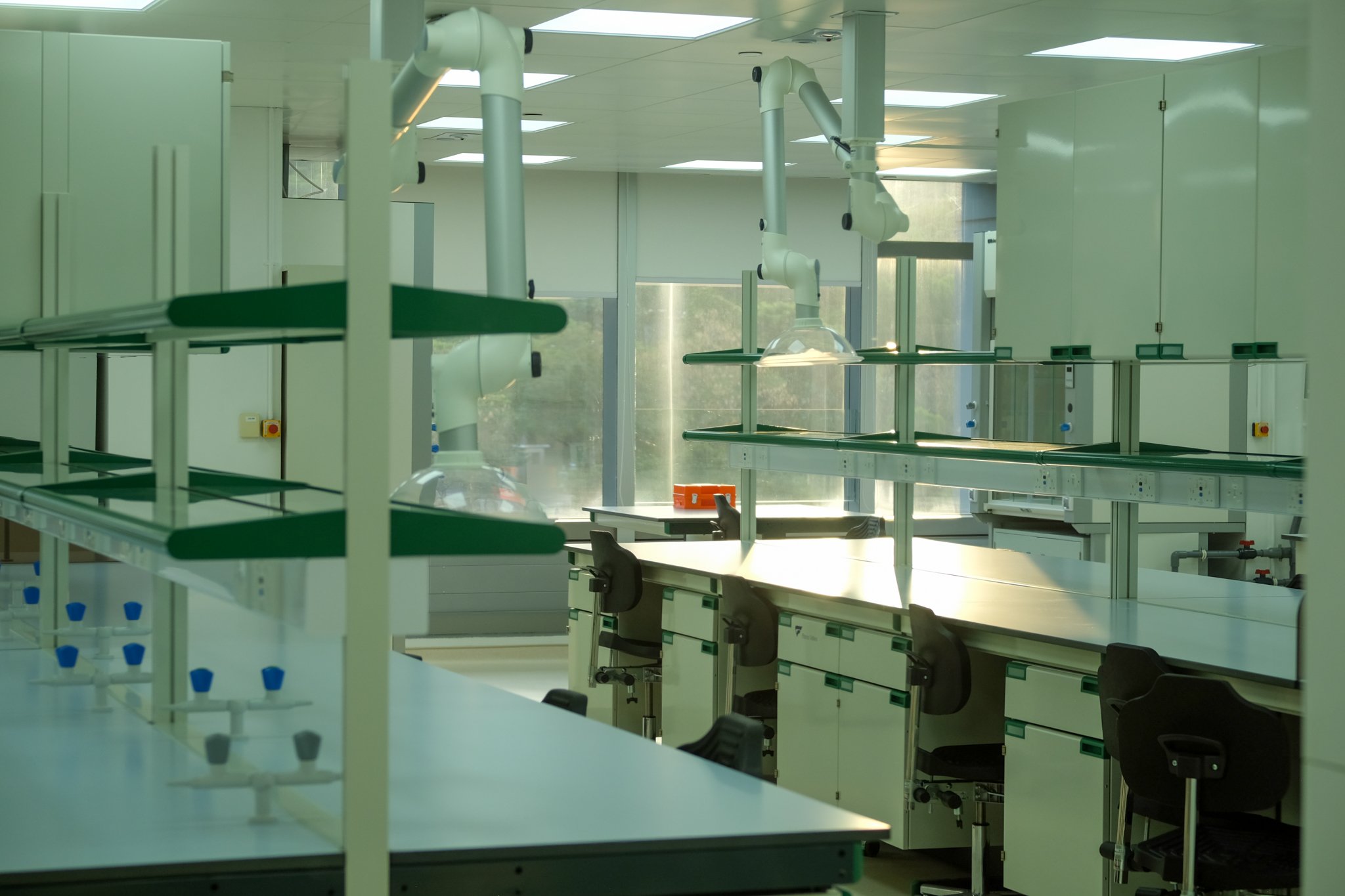Cleanroom
A cleanroom / 無塵室 / 潔淨室 / 淨室 / 無塵車間 / 潔淨車間 is a specially designed, contamination-controlled room where the level of airborne particles, microbes and molecular contaminants is kept below a set limit. The room is engineered with advanced ventilation and filtration systems to ensure satisfactory air quality and airflow for the intended use of the room. The cleanliness level of a clean room is indicated by its class.
Our HARD SHELL Cleanrooms are used in various industries such as pharmaceuticals, hospitals, and food plants where sterile environments are required. They control environmental factors like temperature, humidity, and air pressure, and reduce airborne particles. Materials and water are maintained at required cleanliness levels. In semiconductor manufacturing, cleanrooms also control static electricity, micro-vibrations, trace gas components, and electromagnetic waves.
Negative pressure cleanrooms are needed for handling pathogenic bacteria and recombinant DNA to prevent leakage to the outside environment. Overall, cleanrooms are crucial in providing a controlled environment that minimizes the risk of contamination and ensures quality control in various industries.
BUILD YOUR OWN
The Main Features of Our HARD SHELL Cleanroom / 無塵室 / 潔淨室 / 淨室 / 無塵車間 / 潔淨車間
“Cleanroom design: Cleanroom design must take into account a variety of factors, including the type of work being performed, the equipment being used, and the required level of cleanliness. Cleanroom designers must also consider factors such as the location of the clean room, the size and shape of the room, and the materials used in construction.
Controlled air flow: Cleanrooms use specialized ventilation systems to control the flow of air and keep it free from contaminants. Air is typically filtered through high-efficiency particulate air (HEPA) filters to remove particles as small as 0.3 microns.
Surface materials: The materials used in clean room construction are selected for their low particle shedding characteristics. Walls, floors, and ceilings are typically made of smooth, non-shedding materials such as stainless steel, vinyl, or epoxy.
Airlocks: Cleanrooms often include airlocks or anterooms to minimize the transfer of contaminants from the outside environment. Airlocks provide a buffer zone where personnel can remove or put on cleanroom garments and equipment can be decontaminated before entering the main cleanroom area.
We offer optimal designs in accordance with customer requests. We handle all aspects of the process from design through to construction, post-completion inspections and validation.
We are devoted to providing follow-up services, including regular post-installation inspections.”
Cleanroom 無塵室 / 潔淨室 / 淨室 / 無塵車間 / 潔淨車間 Applications
“Semiconductor manufacturing: Cleanrooms are essential to the manufacture of microelectronics, including computer chips, memory modules, and other electronic components. Even a single particle of dust or other contaminants can cause defects in the manufacturing process, resulting in reduced performance or failure of the final product.
Pharmaceuticals: Cleanrooms are used in the manufacture of pharmaceuticals, where the presence of contaminants can compromise the safety and efficacy of drugs. Cleanrooms are also used in the manufacture of medical devices, such as surgical instruments and implants, where cleanliness is critical to patient safety.
Biotechnology: Cleanrooms are used in biotechnology research and development, where the presence of microbes or other contaminants can compromise the accuracy and reproducibility of experiments. Cleanrooms are also used in the production of biologics, such as vaccines and monoclonal antibodies.The purpose of a Cleanroom is to reduce airborne dust and fine particles and to suppress the propagation of germs.
Cleanrooms are widely used in plants for semi-conductors and liquid crystal devices, manufacturing plants for electronic or precision machine parts and materials, hospitals, medical device manufacturing, university laboratories, food plants and more.”








